Floral Design
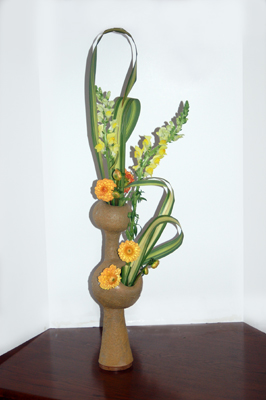
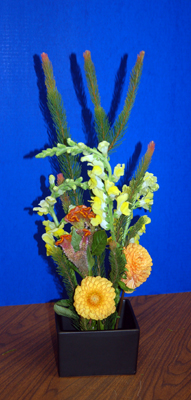
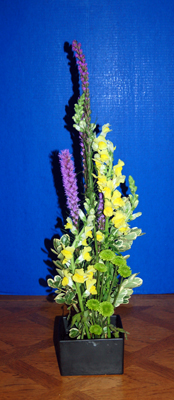
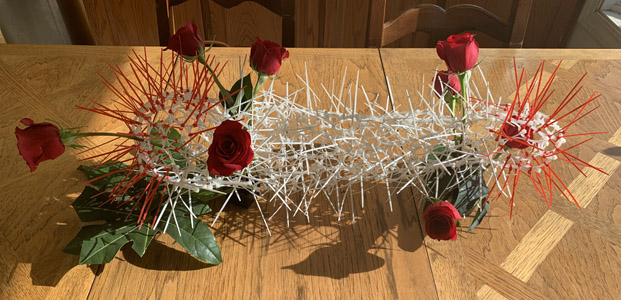
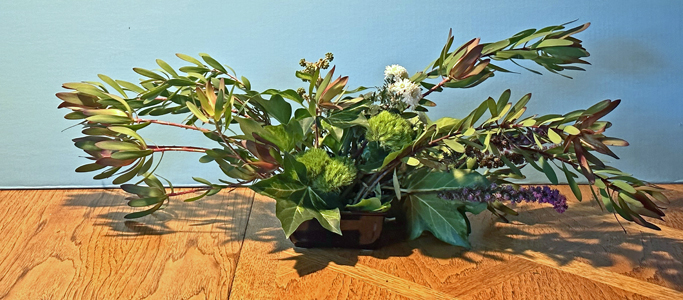
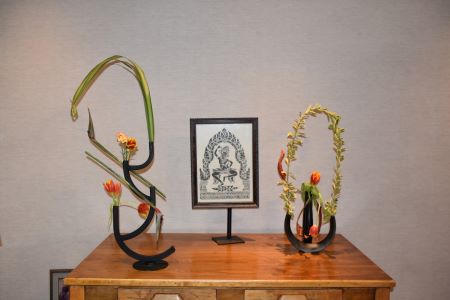
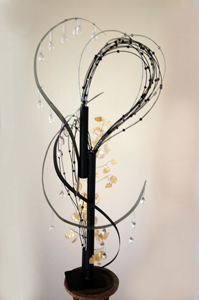
All pictures are small. Click to see full size.
Line and Line-Mass (Creative vs Traditional)
This group is for members who are interested in creating floral designs. We have a demonstration, create and appreciate. We also attend and sometimes participate in flower shows, exhibitions, seminars and symposiums.
Participation
All levels are welcomed! No experience is needed. We start with a presentation on what we will be doing. Then you make. We help each other. At the end we appreciate each other's work. Finally, you bring home your own design. Each month we do something different.
Meeting times
We meet at the leader's home on the 3rd Thursday of the month from 7 PM to 9 PM unless otherwise specified. We do not meet in June through August nor in December.
Design members are willing to drive others who do not wish to drive at night.
Please contact the leader before the meeting so a carpool can be arranged.
For more information and to be added to the group's mailing list, send email to the leaders on Contact Us.
Meeting is cancelled if 3 or more people do not sign up.
Our designs will follow the Handbook for Flower Shows v. 2017, using the Elements of Design and the Principles of Design.
Thursday April 18 at 7-9 PM
Line or Line-Mass (Creative or Traditional)
Traditional Line and Line-Mass designs have overlapping forms (no clustering).
In general, the line comes out from the container and the lip of the container is covered by plant material.
Use transitional materials and gradation of colors and sizes to fill the line.Creative designs use less plant material and space letting your eye follow the implied line. Clustering or grouping materials is common.
We have created horizontal and vertical designs earlier this year. You may do so again or try a crescent, S-curve (Hogarth curve) or zig-zag. Lynn will demonstrate both a creative and traditional design using one of these 3 latter lines.
You choose the type of line, whether it is line or line-mass and whether it is Traditional or Creative.
Take a look at your plant material. Flowers come in different shapes: daisy, cup, spike, cluster, globe, flathead, filler, plume, and trumpet. You will want at least 2 different forms of plant material with contrasting color/hue and texture.
Please bring- Plant material. Select one variety of plant material (3-5 pieces) that has a spikey form and another with a rounded form. Don't forget greenery.
Also look for difference of texture - dull/shiny; rough, fuzzy, smooth.
- Spikey forms, for line and to establish skeleton, eg. Stock; cattail, umbrella plant, Bird of Paradise;
- Rounded forms for emphasis, e.g. Chrysanthemum, roses, carnation, etc.;
- For Traditional arrangements, filler or transitional forms to give contrast of texture, round out design and cover mechanics, e.g. small flowers or small leafed foliage, euonymus, boxwood, yew, redwood, pittosporum, hosta. Texture is the surface quality of the plant material, such as rough or smooth, dull or shinny.
- Mechanics to hold your plant material, e.g. floral foam or a pin frog (kenzan).
- Your container, shapes, accessories, flowers, branches, and/or line material may emphasize the color. Dried material may be painted. In Botantical Arts Division you may even dye fresh flowers, but never in the Design Division of a show. Beware that store bought flowers are often dyed - bright blue, etc. White carnations will drink up colored water and turn that color. There is even spray paint for flowers. This use of color is only eligible for Freedom of Expression class in Botanical Arts Design Section.
- Your selection of material should have different textures, sizes and forms (shapes).
Do not bring artificial flowers or other plant material. Artificial material is never used by National Garden Club.
Note: Clear containers are more difficult because your stems as well as your flowers are part of the design. You can wrap the clear container or spray it with white flocking for "snow". White containers work better with mostly white. Lynn has a library of containers and you can purchase a basic black set (square and rectangle).
After we create an arrangement to bring home, we appreciate each other's work
based on the elements and principles of design.
Words of Appreciation
March "Everything Green"
All pictures are small. Click to see full size.
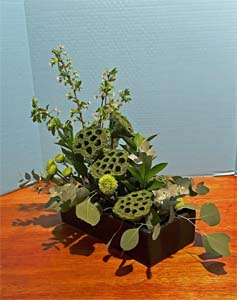
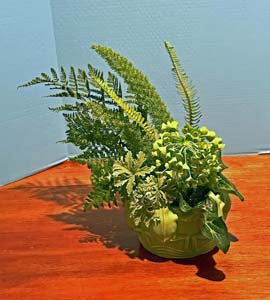
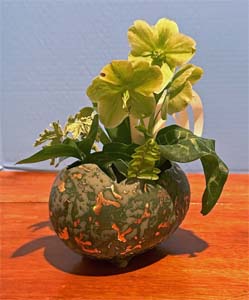
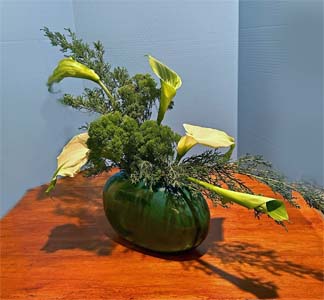
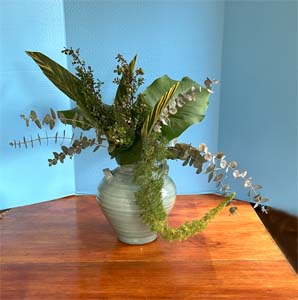
February all dried
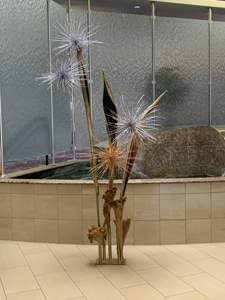
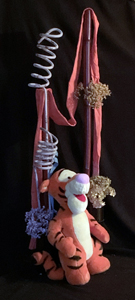
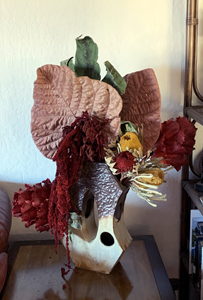
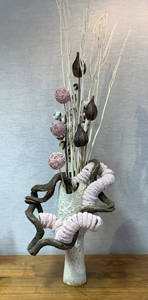
February Workshop
Pick a container.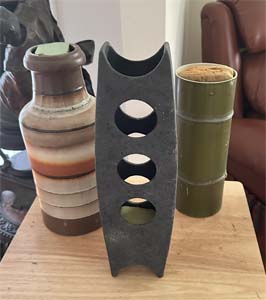
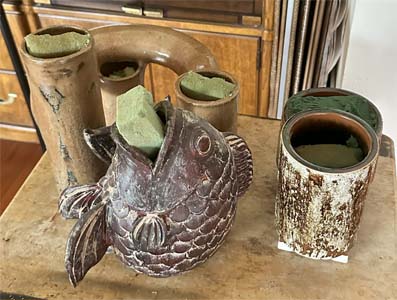
Pick dried material - choose a selection of textures, forms and color.
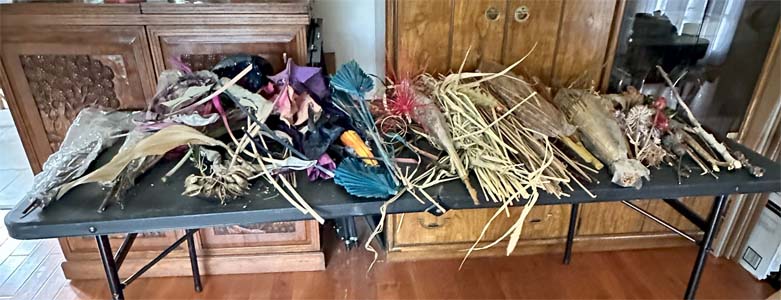
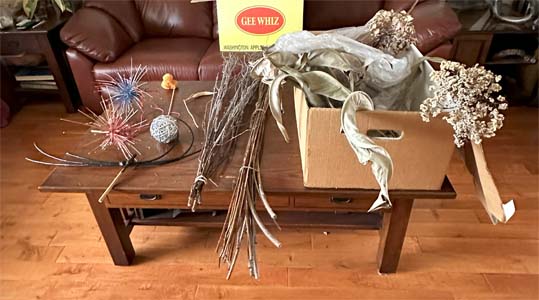
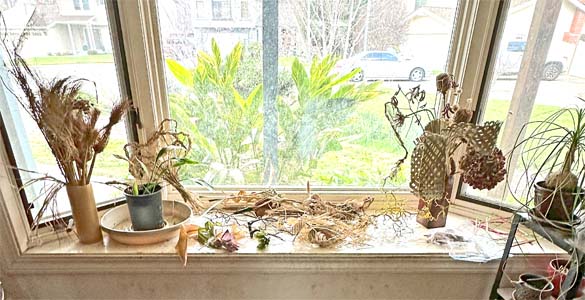
The following pictures are small. Click to see full size.
Create and appreciate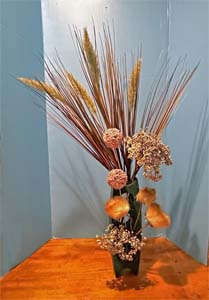
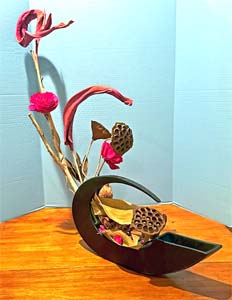
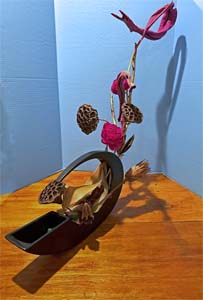
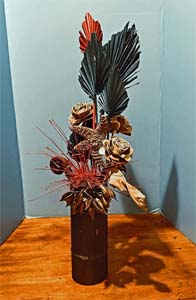
Resources
The National Handbook describes both Creative and Traditional styles. These are not design types, but how you present your plant material. Creative designs use contrast and dominance with plant material and voids to create rhythm (positive and negative space or "plastic organization".) We are going to concentrate on the two elements of design (size and space) and particularly appreciate contrast, dominance and rhythm. All elements of design and all principles of design should be followed. Look at art and apply the principles to your creative designs.
Ikebana has many schools of floral design. For more information see Ikebana International San Francisco . They meet on the 3rd Friday during the day.